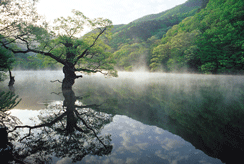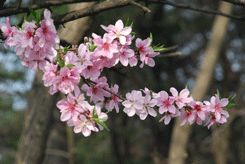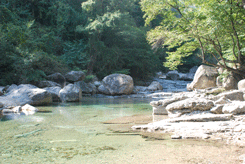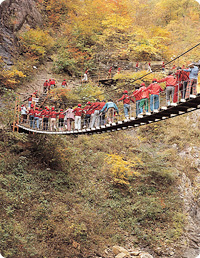National Park
 |
 |
 |
Juwangsan
Juwangsan (South eastern region)Mt. Juwang boasts of rocky peaks that form a "stone folding screen,'' scenic valley, falls and mineral springs and temples. Juwangsan is the mountain composed of valleys with curious stones. Juwangsan National park is relatively low and small but it creates a beautiful landscape. Having lots of legends, scenic figures and curious rocks, it attracts many visitors every year. It is called Sogeumgang, the most beautiful place in Gyeongsangbuk-do area, and one of the three great mountains in Korea, having many fantastic rocky cliffs and gorgious valleys. The mountain was designated as the 12th National Park on March 30, 1976 in Korea, neighboring Choengsong-gun and Yeongdeok-gun in Gyeongsangbuk-do and covering 108㎢ of the area. Centering around Juwangsan, Taehaeng-san (933m), Daedunsan (905m), Myeong-dongjae (875m), and Wanggeoam (907m) are spreading like a folding screen. Juwangsan originally was called as Seokbyeongsan, Daedunsan, Jubangsan and there are interesting stories respectively. Most of the cliffs in Juwangsan were formed by volcanic activity. The rocks are different from those found in Jeju Island which have lots of holes in them. And the rocks were vulnerable to erosion, creating a vertical cliff, stairs topography, and waterfalls. The volcanic activity was supposed to happen about 70 million years ago when dinosaurs lived on the Korean Peninsula in the Cretaceous period, the Mesozoic Age. Juwangsan National Park has many beautiful spots to visit such as Haksodae, where blue and red cranes lived, Geupsudae, Giam where Juwang and General Ma had big fight, Mangwoldae, Gamebong, Juwanggul, and numerous waterfalls. For the main cultural heritage, there is Bogwangjeon in Daejeonsa(Temple) built during the year 12th of King Munmu of Silla Dynasty (672). A recommendable trekking is from Daejeon Temple to Mt. Juwang peak, the Galdeung Ridge, Second Falls and then back to Daejeon Temple, which will take about four hours.






